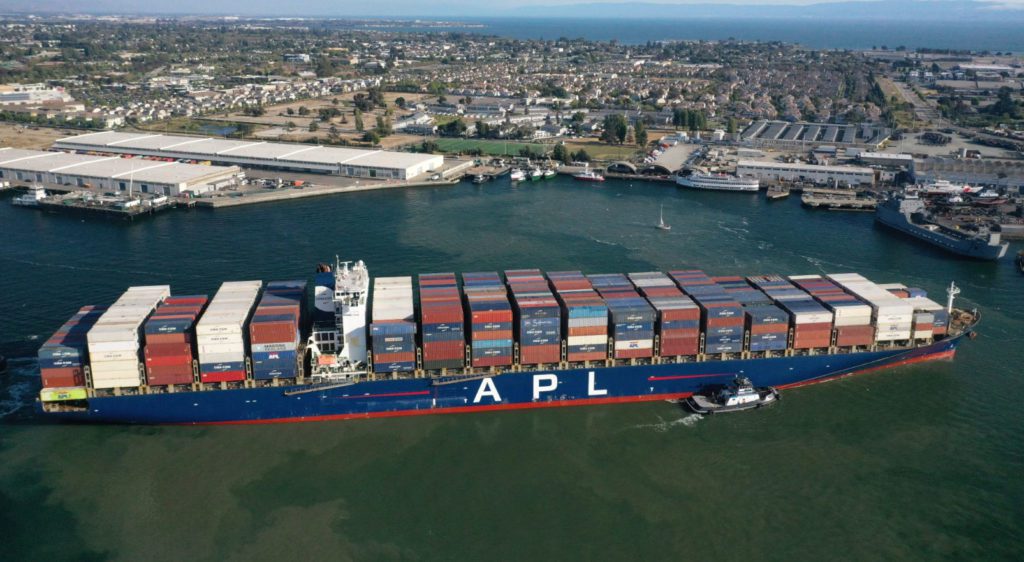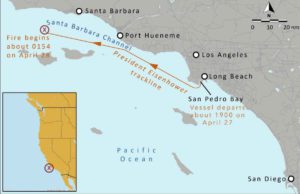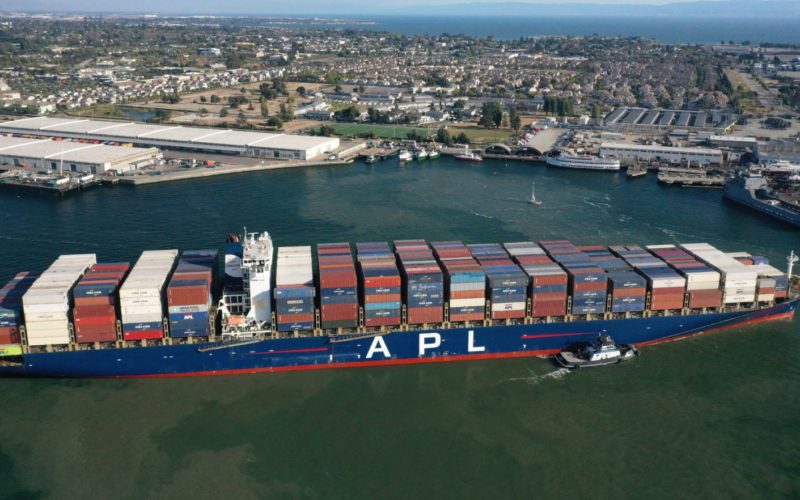
An engine room fire that caused a containership to lose propulsion and drift for several hours before being towed to the Port of Los Angeles was likely caused by an improper engine repair, according to federal investigators.

Specifically, the National Transportation Safety Board (NTSB) determined the crewmember insufficiently swaged a compression fitting ferrule during the installation of fuel oil return tubing for a main engine’s cylinder. That allowed an end of the tubing to disconnect and spray fuel oil onto a nearby unshielded and uninsulated cylinder exhaust component.
The 984-foot President Eisenhower was underway about 17 miles southwest of Santa Barbara, Calif., when the fire broke out, the NTSB said. The crew fought the fire using hoses and a fixed water mist system before using the engine room’s fixed carbon dioxide fire-extinguishing system.
No injuries were reported among the crew of 22. There was no pollution reported. Damage to the U.S.-flagged ship was estimated at $8,223,172.
President Eisenhower was managed by APL Maritime, a subsidiary of American President Lines. APL is a subsidiary of French shipping company CMA CGM.
Documents published online with the NTSB investigation include an interview with Toney Sawyer, an AB the containership.
Sawyer described the efforts of himself and other crewmembers. When the second engineer opened the door, they could all feel the heat of the fire even though they were dressed to fight it.
“Even though you got all that equipment on, you still feel it seeping through every little crack it can,” Sawyer said.
Once inside, he realized they could not get down on their knees to help escape the heat.
“The only color you could see in there was red, red and orange. That’s the only thing you can see, everything else was black,” Sawyer recalled.
Sawyer said he and another crewmember fought the fire for hours. “Once the sun started coming out that’s when everybody who had a suit on, we were laid down on the deck asleep, exhausted, tired. Everybody from the ship that couldn’t dress out, they were scared,” he said. “No one knew what to say.”
According to the NTSB report, the ship had completed cargo operations and was partially loaded when it departed Los Angeles en route to Oakland. At 0042, with the engine operating at 80 rpm, the second engineer and first engineer began to conduct a walkthrough around the engine room to ensure all machinery was operating correctly.
The third mate stated that at that time, the engineers informed him that the engine and machinery “looked good.”
The report said the engine room and machinery on board President Eisenhower were automated, controlled and monitored such that machinery spaces could be unattended. The ship’s engineers typically worked in and monitored the machinery spaces only during the day.
The crew did not continually monitor the closed-circuit television system on their desktop computer stations, according to the report. After crewmembers discovered the fire and began to take action, the master began reducing the main engine rpms and slowing the vessel. This happened at 0202.
At 0223, the chief engineer initiated the release of carbon dioxide to the engine room. The captain notified the U.S. Coast Guard and the vessel’s designated person ashore. The navigation lights and automatic identification system transmission were changed to indicate that the vessel was not under command and did not have the ability to maneuver.
The containership drifted north toward the California coastline. By midmorning, the 87-foot-long cutter Blackfin was on location and tugboats were arranged to assist the vessel.
At 1402, the 4,700-hp tugboat Teresa Brusco began pushing President Eisenhower back into the Santa Barbara Channel. The containership was 3.5 miles from shore at that point, according to the report. NTSB investigators identified two lessons from the fire. The first is that rapid oil leak-detection systems are a valuable tool that can be used to prevent fire in machinery spaces.
Since President Eisnehower’s crew effectively contained the spread of a main engine room fire by removing fuel and oxygen sources, cooling boundaries, and communicating effectively, NTSB investigators determined realistic training exercises pay off.

